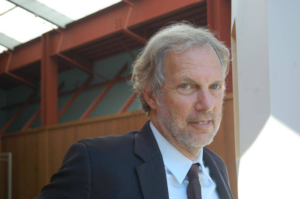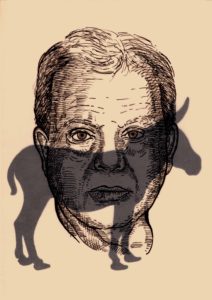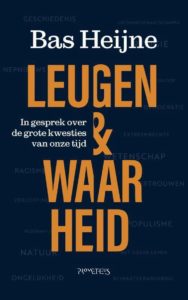De haardos van Lady Godiva
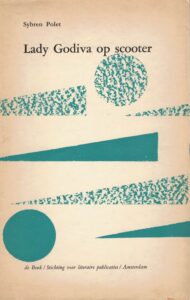 Macbeth, Don Juan, Koningin Guinevere, Graaf Dracula, alle historische figuren hebben in meer of mindere mate – meestal mindere – een kern van waarheid, waarmee de geschiedenis naar eigen inzicht op de loop gegaan is.
Macbeth, Don Juan, Koningin Guinevere, Graaf Dracula, alle historische figuren hebben in meer of mindere mate – meestal mindere – een kern van waarheid, waarmee de geschiedenis naar eigen inzicht op de loop gegaan is.
Een interessant en pikant voorbeeld biedt Lady Godiva. De oerversie verhaalt hoe de Lady in kwestie gehuwd is met Leofric, graaf van Mercia in Midden-Engeland en de schatrijke maar rechtlijnige eigenaar van de stad Coventry en omstreken. Het is het jaar 1040. Lady Godiva heeft erg te doen met de bewoners, die zuchten onder de zware belastingen die de graaf hen oplegt en probeert haar man keer op keer te vermurwen.
Uiteindelijk toont hij zich bereid op haar smeekbeden in te gaan, op voorwaarde dat de Lady naakt op een paard gezeten door de stad rijdt. Zij accepteert zijn uitdaging en rijdt, slechts gehuld in haar lange haren, door Coventry. Op haar verzoek blijven alle bewoners binnen, met de luiken gesloten.
Die oerversie speelt in de eerste helft van de elfde eeuw, maar kreeg pas zo’n twee eeuwen later bredere bekendheid toen het verscheen in de Flores historiarum, een verzameling verhalen uit de Britse historie – letterlijk vertaald: Bloemen van de geschiedenis -, bijeengebracht door de benedictijner monnik Roger of Wendover. Het boek werd voor het eerst gedrukt in 1236.
De opofferingsbereidheid van Lady Godiva werd sindsdien op tal van manieren vormgegeven, met name in de beeldende kunsten – er zijn talloze schilderijen en beeldhouwwerken van gemaakt – en in literatuur: toneelstukken, gedichten, prozastukken. Echt grote populariteit kreeg het thema pas in 1842, toen het gedicht Godiva van Alfred, Lord Tennyson (1809-1892) in druk verscheen.
Van ander werk waarin zij een hoofdrol speelt, valt het toneelstuk Monna Vanna (1902) op, van de Franstalige Belg Maurice Maeterlinck (1862-1949), aan wie in 1911 de Nobelprijs voor literatuur werd toegekend. Het thema van ‘Wedden dat’ krijgt hier vorm in het verhaal over de schone Monna Vanna, echtgenote van Guido Colonna. De stad Pisa is omsingeld door het leger van Florence, de bevolking wordt uitgehongerd. Als tegenprestatie voor het beëindigen van de belegering eist Prinzivalle, de leider van de Florentijnen, dat (Gio)vanna één nacht bij hem doorbrengt, slechts gekleed in een mantel. Guido voelt zich door deze eis in zijn mannelijke eer aangetast, maar Vanna aarzelt geen moment. En terecht, want Prinzivalle gedraagt zich als een heer en volstaat met een kus op haar voorhoofd.
Uiteraard leende zo’n prikkelend gegeven zich bij uitstek voor verfilming. Er zijn dan ook ettelijke films gemaakt met een titel als Lady Godiva rides, maar die hebben allemaal niet veel meer om het lijf dan een verhaallijntje rondom die ene gewaagde scene. De Engelse productie Lady Godiva rides again (1951), bijvoorbeeld, werd in Amerika uitgebracht onder de titel Bikini Beach. Dat zegt al genoeg.
De mythe van Lady Godiva heeft overigens nog een begrip in de Engelse taal opgeleverd. Terwijl alle burgers van Coventry zich aan haar verzoek hielden om niet te pogen een glimp van de naakte amazone op te vangen, kon één man de verleiding niet weerstaan. Tom the Taylor kijkt stiekem toch en wordt daarvoor met blindheid gestraft. Sindsdien is Peeping Tom of, voluit, Peeping Tom of Coventry – to peep is gluren – de gangbare Engelse term voor voyeur. Er is overigens weinig grond om aan te nemen dat het nieuwsgierig kleermakertje echt bestaan heeft.
In 1960 werd de Britse film Peeping Tom uitgebracht, over een seriemoordenaar die zijn slachtoffers filmt terwijl hij ze ombrengt. De Duitse hartenbreker Karlheinz Böhm speelt daarin de titelrol.
Ook in de Nederlandse letteren heeft de Lady zich gemanifesteerd, al was het dan ook slechts in het titelgedicht van de bundel Lady Godiva op scooter van Sybren Polet uit 1960. Polet – een pseudoniem van Sybe Minnema (1924-2015) – wordt in vakkringen gerekend tot de Experimentelen en de Vijftigers, maar door literatuurliefhebbers ook wel tot de Onleesbaren. Een willekeurig fragment uit het onderhavige werk moge ter illustratie volstaan:
Rijd, rijd zo dicht langs hen heen
dat de politieagenten gedichten gaan schrijven
die ze des avonds met gemotoriseerde stem
aan hun vrouwen voorlezen
en de direkteur van de Universiteitsbibliotheek, geprikkeld,
zijn hoed afneemt
om zich de literatuur van het voorhoofd te wissen.
Ook de rest van het gedicht heeft niets met Lady Godiva te maken.
Dat interessant en pikant nog steeds een bruikbare combinatie vormen, blijkt uit de pop-artiesten die het thema in een nummer verwerkten. Dat zijn niet de minsten. Neem The Velvet Underground, de groep rond Lou Reed en John Cale. Die hadden zich al voor Venus in furs op hun debuutalbum The Velvet Underground & Nico uit 1967 literair laten inspireren door de novelle Venus im Pelz (1870) van de Oostenrijkse auteur Leopold von Sacher-Masoch, aan wiens naam en werk het begrip masochisme is ontleend.
Op het daarop volgende album, White light/White heat (1968), staat het nummer Lady Godiva’s Operation, met tekst en muziek van Lou Reed. Tot de meer verrassende interpretaties van de operatie in kwestie, hoort die volgens welke het hier een geslachtsverandering zou betreffen. De regels
Doctor arrives with knife and baggage
Sees the growth as just so much cabbage
That now must be cut away
zouden verwijzen naar een woekering – the growth – die verwijderd moet worden. Het vervolg vult daarop aan, dat er niet alleen aan weerszijden geopereerd wordt, maar ook dat de ingreep onomkeerbaar is:
Now come the moment of great great decision
The doctor is making his first incision
One goes here, one goes there
De Britse formatie Simply Red, bekend van de hit Holding back the years, bracht in 1987 het album Men and women uit, met daarop Lady Godivas’s room.
Ook het damestrio Boney M, meestal voorzien van een éénmansballet, stortte zich op Lady Godiva.
Dat werd met enige argwaan tegemoet gezien, aangezien hun historisch besef niet overdreven betrouwbaar was gebleken. In het refrein van hun wereldhit Rasputin gingen zij immers voorbij aan het feit dat Rusland geen koningin had maar een tsarina:
Ra Ra Rasputin
Lover of the Russian queen
Om in het geval van Lady Godiva het zekere voor het onzekere te nemen, kozen ze als tekst ongeveer de korte versie van een hoofdstuk uit een geschiedenisboek:
Her name was Lady Godiva
A lady so brave and so strong
Her husband the Earl of Mercia
He treated her terribly wrong
She’s a lady
She’s a lady
She rode naked on horseback
To stop him from his tax increase
(..)
Then sneaking a glance through the window
Was a guy they called Peeping Tom
He caught a glimpse and was blinded
Curiosity sometimes is wrong
Het meest blijft de dappere daad van de Lady in ons geheugen hangen door de hit die het Engelse duo Peter & Gordon er mee scoorden, een nummer dat overigens in Coventry niet te horen mocht zijn omdat de burgemeester de tekst obsceen achtte. De volledigheid vereist hier te vermelden dat die tekst niet zozeer over Her Ladyship ging als wel over een lokale stripteaseuse (Seventeen, a beauty queen) die, gezegend met lang haar en niet door gêne geremd, carrière maakt in Hollywood, zij het in films van bedenkelijk allooi.
Voor een vergelijking met de echte Lady Godiva hadden Peter & Gordon niet meer dan een paar regels nodig:
Her long blond hair
falling down across her arms
hiding all the lady’s charms
In november 1966 staat Lady Godiva op de zesde plaats in de Amerikaanse Top-100.
Phasing Out Fossil Fuels Is Possible. These State-Level Plans Show How
When it comes to climate change, state governments across the United States have been way ahead of the federal government in providing leadership toward reducing carbon pollution and building a clean energy economy. For example, when Trump announced in 2017 his intention to withdraw the U.S. from the Paris Agreement, the governors of California, Washington and New York pledged to support the international agreement, and by 2019, more than 20 other states ended up joining this alliance to combat global warming.
Robert Pollin, distinguished professor of Economics and co-director of the Political Economy Research Institute at the University of Massachusetts at Amherst, has been a driving force behind several U.S. states’ efforts to curb carbon emissions and make a transition to a green economy. In this exclusive Truthout interview, Pollin talks about how states can take crucial, proactive steps to build a clean energy future.
C.J. Polychroniou: Bob, you are the lead author of commissioned studies, produced with some of your colleagues at the Political Economy Research Institute of the University of Massachusetts at Amherst, to fight climate change for scores of U.S. states, including Pennsylvania, Ohio, West Virginia, Maine, Colorado, Washington, New York and California. The purpose of those studies is to show the way for states to attain critical reductions in carbon emissions while also embarking on a path of economy recovery and a just transition toward an environmentally sustainable environment. In general terms, how is this to be done, and is there a common strategy that all states can follow?
Robert Pollin: The basic framework that we have developed is the same for all states. For all states, we develop a path through which the state can reduce its carbon dioxide (CO2) emissions by roughly half as of 2030 and to transform into a zero emissions economy by 2050. These are the emissions reduction targets set out by the Intergovernmental Panel on Climate Change (the IPCC) that are meant to apply to the entire global economy. The IPCC — which is a UN agency that serves as a clearinghouse for climate change research — has concluded that these CO2 emissions reduction targets have to be met in order for we, the human race, to have a reasonable chance to stabilize the global average temperature at no more than 1.5 degrees Celsius above the preindustrial level, [the level of] about the year 1800.
The IPCC has concluded that stabilizing the global average temperature at no more than 1.5 degrees Celsius above preindustrial levels provides the only realistic chance for avoiding the most severe destructive impacts of climate change in terms of heat extremes, heavy precipitation, droughts, floods, sea level rise, biodiversity losses, and the corresponding impacts on health, livelihoods, food security, water supply and human security. Given that these emissions reduction targets must be met on a global scale, it follows that they also must be met in every state of the United States, with no exceptions, just like they must be met in every other country or region of the world with no exceptions.
By far the most important source of CO2 emissions entering the atmosphere is fossil fuel consumption — i.e., burning oil, coal and natural gas to produce energy. As such, the program we develop in all of the U.S. states centers on the state’s economy phasing out its entire fossil fuel industry — i.e., anything to do with producing or consuming oil, coal or natural gas — at a rate that will enable the state to hit the two IPCC emissions reduction targets: the 50 percent reduction by 2030 and zero emissions within the state by 2050.
Of course, meeting these emissions reduction targets raises a massive question right away: How can you phase out fossil fuels and still enable people to heat, light and cool their homes and workplaces; for cars, buses, trains and planes to keep running; and for industrial machinery of all types to keep operating?
It turns out that, in its basics, the answer is simple and achievable, in all the states we have studied (and everywhere else for that matter): to build a whole new clean energy infrastructure that will supplant the existing fossil fuel dominant infrastructure in each state. So the next major feature of our approach is to develop investment programs to dramatically raise energy efficiency standards in buildings, transportation systems and industrial equipment, and equally dramatically expand the supply of clean renewable energy sources, i.e. primarily solar and wind energy, but also geothermal, small-scale hydro, as well as low-emissions bioenergy.
For all but one of the states we have studied, we estimate that the amount of clean energy investments that are needed amounts to between 1-3 percent of all state economic activity, i.e. the state’s GDP (Gross Domestic Product). That can be a lot of money — like $6.6 billion in Washington State (1.2 percent of projected average GDP between 2021-2030), $22.6 billion in Pennsylvania (2.5 percent of projected average GDP between 2021-2030) and $76 billion in California (2.1 percent of projected average GDP between 2021-2030). But still, these spending levels, amounting to 1-3 percent of GDP, do still mean that something like 97-99 percent of all the state’s economic activity can be devoted to everything else besidesclean energy investments. West Virginia is the one outlier in the states we have studied so far. But even here, we estimate the investment program will need to be only somewhat higher, at 4.2 percent of the state’s projected average GDP for 2021-2030, equal to $3.6 billion per year.
The Current Hardships Facing Palestinian Refugees
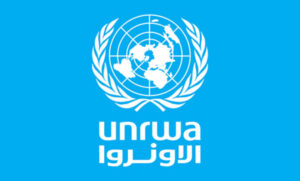
The United Nations’ Relief and Works Agency (UNRWA)—known as the main international relief and human development organization for Palestinian refugees—defined Palestinian refugees as “persons whose normal place of residence was Palestine during the period 1 June 1946 to 15 May 1948, and who lost both home and means of livelihood as a result of the 1948 conflict.” However, most notably, Palestinians displaced because of the 1967 war, and subsequent hostilities, are not referred to or registered as refugees by the Agency, but they are eligible to receive services by UNRWA. Despite this fact, within segments of the international community, Palestinians who lost both their homes and means of livelihood as a result of the 1967 war, and subsequent hostilities, are also regarded as refugees.
In the five areas where UNRWA is in operation, namely, Jordan, Lebanon, Syria, the Gaza Strip, and the West Bank (including East Jerusalem), the hardships faced by the Palestinian refugees has worsened in recent history.
Most recently, with respect to the coronavirus pandemic, the Palestinian refugee population is increasingly in a vulnerable position with little-to-no access to the COVID-19 vaccine. Within the occupied territories of Gaza and the West Bank, COVID-19 cases are surging with more than 2,236 fatalities and 16,000 active cases in these areas (including East Jerusalem). Meanwhile, Israel has been internationally lauded for carrying out the world’s speediest vaccination drive, with over 90 percent of Israelis above the age of 50 having been fully vaccinated as of February 2021. However, Israel has denied Palestinians living within the occupied territories significant access to the vaccines as Israel argues that the Oslo Accords places responsibility on the Palestinian Authority regarding issues of public health. But even under the Oslo Accords, Israel does have a commitment to help Palestinians living in the occupied territories fight the pandemic. Article 17, stipulation 6 of the Accord states: “Israel and the Palestinian side shall exchange information regarding epidemics and contagious diseases, shall cooperate in combating them and shall develop methods for exchange of medical files and documents.”
Moreover, given that Israel is the occupying power—under international law, namely, the Fourth Geneva Convention of 1949, Israel has a responsibility to ensure the welfare of the population which it is occupying—namely, the Palestinian people in the West Bank, East Jerusalem, and Gaza. The West Bank remains occupied by Israel which “controls entrance and egress, much of the infrastructure, the roads, the currency…in short, all the means of Palestinian independence”—as pointed out by Mitchell Plitnick, the former US director of the Israeli human rights organization, B’Tselem. In the case of Gaza, Israel since 2007 has imposed a land, air, and sea blockade of Gaza. Most notably, the effects of Israel’s blockade, coupled with Israel’s routine bombing of Gaza, has crumbled its infrastructure, led to massive poverty, food insecurity, and resulted in less than 4% of the water in that territory, consisting of nearly 2 million people, being fit for human consumption. Israel thus, in addition to the West Bank, also continues to occupy the Palestinians living within the Gaza Strip, and therefore, Israel as their occupier has a responsibility to vaccinate Gazans. In February 2021, Palestinian officials condemned Israel for blocking the entry of 2,000 coronavirus vaccine doses into Gaza to assist its health workers. Despite evidence to the contrary, even if Israeli claims with respect to the Oslo Accords is valid, this is irrelevant, as stated by scholar Yara M.Asi, “the [Geneva] convention specifies that no agreement between the parties supersedes its protections while occupation continues. This would include the Oslo Accords, signed in 1995 as an interim agreement.” Furthermore, Israel, instead of firs seeking to vaccinate Palestinians in the occupied territories, pledged to provide its spare vaccines to foreign allies such as Honduras and the Czech Republic.
In areas outside of the occupied territories, such as Lebanon which is home to an estimated 207,000 Palestinian refugees, according to UN figures, it has been reported that “Palestinian refugees in Lebanon are three times more likely to die with COVID-19 than the population as a whole.”
During the COVID-19 pandemic, the United Nations’ Relief and Works Agency (UNRWA), responsible for providing healthcare and education to millions of Palestinians living both inside and outside the occupied territories, was “recognized as a major contributor to the containment of the COVID-19 virus”—having quickly adapted its provision of services in compliance with the World Health Organization recommendations. UNRWA implemented remote education curriculum practices, adopted door-to-door delivery of food and medicines, as well as innovative health and psychosocial support hotlines which have been regarded as a significant lifeline to the refugee population during the pandemic. Moreover, UNRWA is also responsible for waste disposal and sanitation services to Palestinian refugee camps across the Middle East — “this includes disinfectant treatments to roads and installations to prevent the spread of COVID-19.”
However, due to the United States’ complete termination of funding to UNRWA under President Trump in 2018, the operations of the Agency were almost brought to a complete halt.
When the pandemic broke out, UNRWA was operating on a shoestring budget with Elizabeth Campbell, UNRWA’s director in Washington, stating in May 2020 that due to America’s termination of funding, “We are basically operating on a month-to-month basis. Right now, we have funding to pay our 30,000 health care workers until the end of this month.”
Even once the COVID-19 pandemic is over, it does not appear that there will be any end in sight to the suffering faced by Palestinian refugees. The hardships faced by Palestinian refugees will continue until the central issues of contention are fully addressed within a final settlement to the conflict. The central issues of contention as it pertains to Palestinian refugees is, firstly, the right of return, secondly, the right of Palestinians for compensation from Israel due to the destruction of Palestinians’ homes, and their livelihoods as a result of the 1948 war, the 1967 war, as well as further hostilities, and the third issue of contention is the assimilation and resettlement of refugees in different countries. Most significantly on the first two points, there is serious doubt as to whether right of return and compensation (both issues which are notably embodied within United Nations General Assembly Resolution 194) is politically feasible and there is doubt as to whether there are legitimate frameworks within international law that firmly allows stateless Palestinians to successfully advocate for the right of return and compensation.
The Taba Summit is widely regarded as perhaps the closest instance that a final settlement to end the longstanding conflict was almost reached between the Israelis and the Palestinians. At the time of the Taba Summit, the Israelis expressed an understanding on the issue of compensation, with Israel advocating that an international commission be created to gather, verify, and pay individual compensation claims. However, at that time, you had a government in Israel that, at least, gave the public impression that it was willing to negotiate on key issues required to reach a permanent settlement to the conflict. Presently, however, the center-left parties in Israel, such as the Labour Party, are a shell of its former self and a significant segment of the population in Israel strongly supports Benjamin Netanyahu and his far-right Likud Party, which has been expanding Israeli settlements in the occupied territories, further jeopardizing any viable solution to the conflict. There is also disunity among the Palestinians with friction between the Palestinian Authority in the West Bank and Hamas in Gaza. Lastly, unless the United States is willing to apply meaningful pressure on Israel to seriously negotiate a final settlement with the Palestinians, an end to the protracted refugee crisis will not be possible.
Hiking The Minimum Wage To $15 Is Key — But It’s Hardly A Living Wage
The federal minimum wage hasn’t increased in over a decade. After a brief but failed attempt by the Biden administration to raise it to $15 an hour, it will most likely remain at the current $7.25 for an indefinite time to come. This is a shame, for the economic benefits of wage hikes are beyond dispute, as many studies have shown, including those authored by Robert Pollin, distinguished professor of economics and co-director of the Political Economy Research Institute at the University of Massachusetts at Amherst. Pollin is co-author of The Living Wage: Building a Fair Economy (1998) and A Measure of Fairness: The Economics of Living Wages and Minimum Wages in the United States (2008) and has worked with many U.S. non-governmental organizations on creating living wage statutes at both the statewide and municipal levels. In this interview, Pollin discusses why, even though we must continue to push for a $15 minimum wage, we must also consider what a true living wage looks like.
C.J. Polychroniou: The general argument against raising the minimum wage is that it is bad for small business and the economy in general. Is there any truth in this claim?
Robert Pollin: Going through a bit of background will be helpful here. The federal minimum wage was last increased in July 2009, from $6.55 an hour to $7.25. So, no increase in 12 years. But actually, the situation is far worse than even what this suggests. That is because, at the very least, we have to factor in the effects of inflation on people’s ability to buy the things they need to live. Inflation means that the prices of food, housing, transportation, clothing and other necessities have been rising. So the minimum wage today would need to be $8.77 in order to buy what $7.25 could buy in 2009.
But there is still much more to the story once we take account of inflation. That is, after we factor in inflation, the U.S. minimum wage actually peaked in 1968, 52 years ago. In today’s dollars, after factoring in inflation, the federal minimum wage in 1968 was $11.90, 64 percent higher than today’s $7.25 figure. Further still, average labor productivity — i.e., the amount of goods or services an average worker can produce over the course of a day in the U.S. — has risen at an average rate of 1.9 percent per year since 1968. What if, starting in 1968, the federal minimum wage had risen every year in step with the 1.9 percent average increase in productivity as well as inflation? That would mean that minimum wage workers would get raises when they are producing more every day, but their raise would only equal exactly their 1.9 percent improvement in productivity but not a penny more. In that case, the federal minimum wage today would be $31.67 an hour — over four times higher than the actual federal minimum wage today.
Now if we go back to 1968, when the federal minimum wage was approximately $11.90 in today’s dollars, in fact the U.S. economy was booming. The official unemployment rate was 3.6 percent, i.e., less than half of the average 8.1 percent unemployment rate over 2020. So it is obvious that the U.S. economy can function just fine at a much higher federal minimum wage rate than the $7.25 rate that prevails today.
We also get basically the same result by looking at the experiences in recent years with minimum wage laws in U.S. states and living wage statues in some municipalities that are higher than the federal minimum wage. Right now, 29 states along with the District of Columbia operate with minimum wage rates higher than the federal minimum. The citywide minimum in Washington, D.C., is already at $15.00, and the State of Washington is next highest at $13.69. The evidence on the experiences in these states and cities is that businesses function at least as well if not better than those states that still operate at the federal $7.25 minimum. The employment opportunities in these states and cities are also at least as good if not better.
It is fair to ask: If businesses are mandated to pay higher wages than they would choose to pay otherwise, then why is it that we don’t see these businesses lay off employees or close up operations after they are forced to give raises? The answer is that the overwhelming majority of businesses don’t want to be forced to raise wages for their employees, but they learn to adjust. They might raise their prices modestly to cover their increased payroll. The businesses’ level of productivity is also likely to improve. This is because their workers become more committed to their jobs when they are paid at minimally decent levels. These productivity increases will not be enough to compensate for the businesses’ increased payroll, but they will help to partially cover some of their higher costs.
Finally, some businesses may just end up accepting modestly lower profits, even if reluctantly. To the extent this occurs, raising the minimum wage will end up advancing a more equal distribution of income between businesses and workers. This is after 40 years under neoliberalism in which inequality has risen relentlessly. The decline in the value of the minimum wage, after adjusting for inflation, has been a significant factor contributing to the overall rise in inequality under neoliberalism.
Bas Heijne – Leugen en waarheid. In gesprek over de grote kwesties van onze tijd
Essayist Bas Heijne gaat in deze bundel interviews op zoek naar het verhaal achter het huidige onbehagen met de moderniteit. Hij sprak twee jaar lang met zeventien internationaal bekende denkers en wetenschappers over kwesties die het hedendaagse debat bepalen, om greep te krijgen op deze verwarrende tijd. Over een breed gevoelde gewaarwording dat er de afgelopen decennia verkeerde afslagen zijn genomen, dat beproefde recepten niet langer voldoen, een belofte niet is ingelost. Traditionele verhalen voldoen niet langer. Vanuit een persoonlijke nieuwsgierigheid is hij op zoek naar resonantie voor hem en de lezer, een betekenisvolle uitwisseling van gedachten, zodat een noodzakelijke bewustzijnsverandering kan plaatsvinden, waardoor men anders kan gaan handelen.
In het interview met wetenschapshistoricus Lorraine Daston is het onderwerp de groeiende argwaan jegens de wetenschap en het recht op een eigen waarheid. Hebben we meer feiten nodig? Een van haar academische studies gaat over hoe ons begrip van objectiviteit zich door de eeuwen heen heeft ontwikkeld. Voor haar betekent objectiviteit dat je kiest voor de meest mechanische methode, die het mogelijk maakt om kennis te toetsen, juist omdat je je eigen oordeel niet vertrouwt. ‘Dat is precies tegenovergesteld aan de gedachte dat iedereen er zijn eigen waarheid op na mag houden, omdat de waarheid nu eenmaal niet bestaat.’ In haar essay Against nature probeert ze een verklaring te vinden waarom wij een bevestiging zoeken van onze morele of religieuze overtuigingen in de natuur. Natuur is overal om ons heen, het is rijk aan levensvormen, waarin je je eigen morele oordelen in kunt spiegelen, en de natuur is onveranderlijk. Natuur wordt gebuikt om morele normen te legitimeren, zoals wanneer het over ras gaat. Of de natuurlijke verschillen tussen man en vrouw. ‘Wanneer je niet langer politieke excuses hebt om iets tegen te houden, omdat de ideologie van gelijkheid uitgaat, wordt een beroep op natuurlijke verschillen gedaan.’, aldus Daston. We moeten streven naar vergroting van eigen perspectief.
De teleurgestelde liberaal en historicus David Wootton gebruikt de geschiedenis om iets te zeggen over het heden. ‘Veel van waar wij tegenwoordig mee worstelen, gaat terug op het mensbeeld waar de Verlichting ons mee heeft geïmpregneerd.’ Het verlichtingsdenken heeft ons vooruitgebracht, maar zit ons nu dwars, met name door de gedachte dat groeiende welvaart ons ook gelukkiger maakt, een menselijk streven zonder einde. Er ligt geen moraal aan ten grondslag en uiteindelijk leidt dat tot het verdedigen van een commerciële consumptiemaatschappij waar het gemis wordt gevoeld van gedeelde waarden, dat leidt tot de huidige onvrede en een felle reactie tegen het liberalisme. ‘We hebben het gevoel van betekenis en waarden verloren, we hebben in de maatschappij onze relaties tot een reeks berekeningen teruggebracht. … Alles wordt instrumenteel gemaakt.’ Maar we zijn geen rationeel calculerende wezens. We moeten ons goed realiseren dat mensen geborgenheid nodig hebben en als je daar niet voor zorgt ontstaan fascistoïde reacties.
Journalist, onderzoeker en auteur Peter Pomerantsev van Dit is geen propaganda. De oorlog tegen de waarheid constateert dat hedendaagse propaganda geen poging meer is om ideologisch te domineren, maar als doel heeft mensen verder uiteen te drijven. Hoe kun je het ideaal van een gedeelde, publieke zaak herstellen in een wereld waar digitale desinformatie wordt ingezet om opponenten en critici in diskrediet te brengen en conflicten aan te jagen? Een veelheid van informatiekanalen drijven mensen uiteen en fragmenteert de publieke ruimte met als resultaat een agressieve polarisatie, verwarring en onzekerheid. En dan ontstaat de behoefte aan een sterke man. Het idee van objectiviteit is niet langer geloofwaardig. Er is gebrek aan een toekomstgericht vergezicht mede veroorzaakt door de groeiende feiten vrijheid. Als je nu succes willen hebben al politicus moet je er meer dan een ideologie op na houden, tegenstrijdige dingen beweren, waardoor veel verschillende mensen zich herkend voelen. Hij pleit voor herstel van de publieke ruimten en een debat dat op argumenten wordt gevoerd.
Politicoloog David Runcicam en auteur van How Democracy ends is weinig optimistisch over de veerkracht van de democratie.
‘Ik geloof nog altijd dat juist het vermogen om je door een crisis heen te rommelen de grote kracht van de democratie is. …Maar het probleem is dat burgers nooit een groots moment van de waarheid zullen beleven waarin alles helder wordt, wie het verkeerd had, wie schuld heeft. Kijk naar de bankencrisis van 2008.’ De stabiele wereld bestaat niet meer, men wil een politiek die recht doet aan dat gevoel van gekwetstheid. Maar niemand deugt, iedereen is verdacht. En iedereen noemt zich democraat, hetgeen de bitterheid alleen maar groter maakt. Het is niet meer een strijd tussen ideologieën, maar een strijd om de betekenis van woorden op persoonlijke gronden, een uit de hand gelopen familieruzie. Mensen hebben het gevoel dat de democratie hun van hun waardigheid berooft en ook de problemen niet oplost. Vandaar de hang naar autoritaire leiders.
Er moet een nieuwe politiek worden uitgevonden die er niet van uitgaat dat de oplossing ligt in het samenbrengen van jong en oud, van hoog- en laagopgeleiden, stads-en plattelandsbewoners, want dat gaan we niet meer beleven, aldus Runcicam.
Socioloog en filosoof Hartmut Rosa ziet de coronapandemie als symbolisch voor ons laatmoderne levensgevoel. Er voelt iets helemaal niet goed, maar we kunnen er onze vinger niet op leggen. Zijn kritiek op de neoliberale orde richt zich niet in de eerste plaats op de groeiende ongelijkheid, maar op de frustratie en woede van het nooit-genoeg. We krijgen nooit wat we verlangen. Je regelt zelf alles wat je wil, autonoom en vrij, maar we blijken machteloos te staan tegenover sociale ongelijkheid, klimaatverandering e.d. We missen resonantie in onze relatie met de natuur, de geschiedenis, met andere mensen en ook in die met onszelf, ons lichaam, aldus Rosa. We moeten streven naar resonantie in onze relatie met de wereld om ons heen, in levendig contact staat met iets buiten jezelf, en dat kan risicovol zijn omdat je je openstelt voor iets wat je niet kunt beheersen. Je moet kwetsbaar durven zijn. We zijn verslaafd geraakt aan parametrische optimalisering.
Met wetenschapsjournalist Angela Saini en socioloog Nathalie Heirich gaat Heine in gesprek over identiteit. Angela Saini, auteur van Superieur constateert dat pogingen om bewijs voor raciale verschillen te vinden de laatste jaren in de wetenschap aan kracht hebben gewonnen en dus niet alleen bij hooligans. Als oorzaak ziet zij een diepe, existentiële angst, de angst om een minderheid te worden dat gepaard gaat met verlies. ‘… als nationaliteit louter een kwestie zou zijn van een paspoort, dan kan in principe iedereen erbij horen, zolang je aan een aantal praktische voorwaarden voldoet. Maar als kleur, ras en etniciteit een rol spelen, dan is dat niet langer het geval. Dat is waarom er in bepaalde kringen zo gretig aanspraak gemaakt wordt op biologische argumenten.’ Dan gaat het niet om burgerschap maar om biologische verschillen.
(zie http://rozenbergquarterly.com/Angela+Sain)
Nathalie Heinrich, auteur van Wat onze identiteit niet is definieert identiteit als volgt. Identiteit bestaat uit hoe je jezelf ziet, hoe je jezelf naar buiten presenteert en hoe je van buitenaf wordt gezien, aldus Heinrich. Identiteit is voortdurend in beweging, open en veel hangt af van de context. Identiteit wordt steeds meer gezien als assimilatie met een groep, aldus Heinrich, je bent deel van een collectief, in plaats van een individu. Er is sprake van een crisis wat identiteit betreft, mede veroorzaakt door de constante vergelijking van jezelf met anderen, o.a. via sociale media. Maar ook voldoen oude verhalen niet meer en dat voelt alsof je je identiteit kwijtraakt.
Na zeventien indrukwekkende interviews kunnen we constateren dat de resonantie is verloren gegaan door de moderniteit met het verlangen naar beheersing, dominantie en controle. De wereld blijkt niet beheersbaar te zijn, ondanks alle techniek. Er is geen gedeelde waarheid meer, als de verhalen je uitsluiten creëer je je eigen waarheid en verhalen. Er is wantrouwen en een afkeer ontstaan van de politiek. De politicus biedt weinig toekomstvisies en bevlogenheid.
We moeten met een nieuw verhaal komen voor een goede maatschappij, waarbij mensen worden betrokken. De politiek moet meebewegen met de maatschappij en niet alleen reageren op de maatschappelijke kwesties.
We moeten voorwaarden voor het geluk organiseren, niet via meetbare zaken, die echte resonantie hinderen. We moeten echte resonantie aangaan, niet gefixeerd op economische groei, maar op gelukkig zijn.
Zie ook:
Linda Bouws – St. Metropool Internationale Kunstprojecten
- Page 2 of 2
- previous page
- 1
- 2


